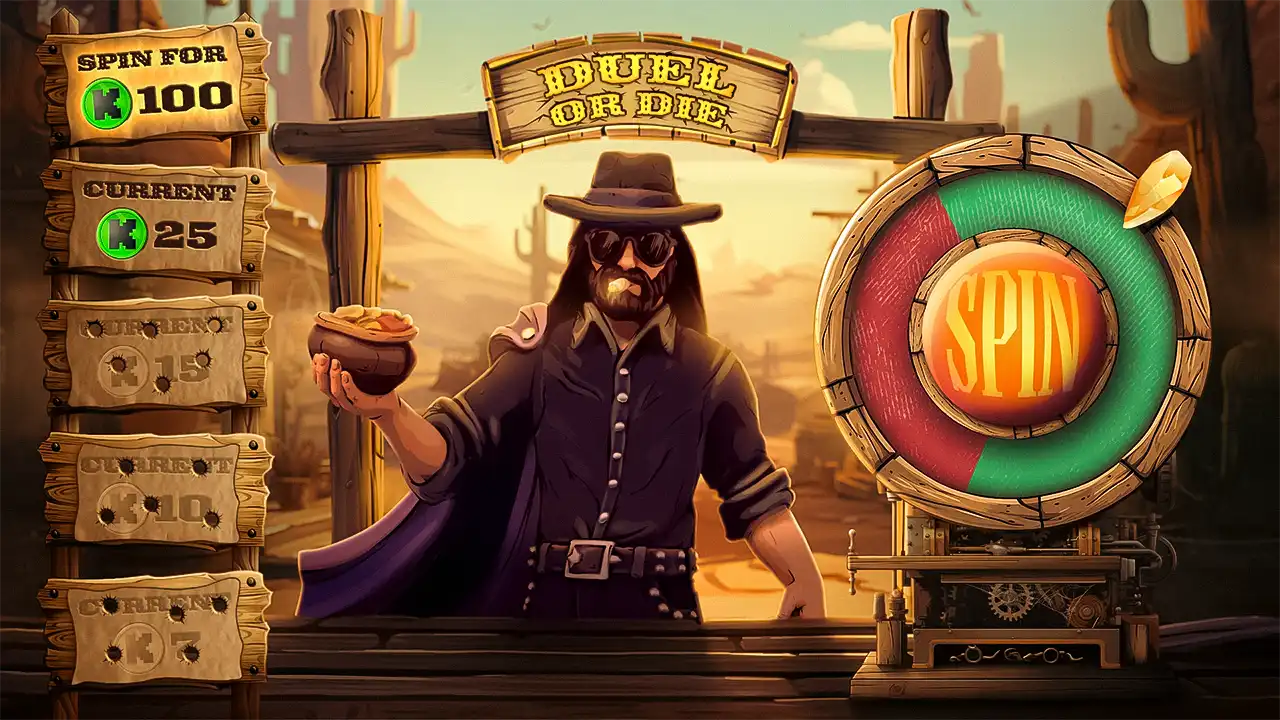
Gambling in The American Wild West
07 Feb 2023
Looking at the grand and luxurious gambling resorts in Las Vegas today, it’s fun to think about just how far away has the gambling industry come since its beginnings in the American West. Many are not aware just how prominent the role of gambling was in the lives of people living in the Wild West back in the day. Actually, for more than a few, it was more than simply playing a game, it was a lifestyle!
The Rise of Gambling in The Wild West
In the 19th century, thousands and thousands of people decided to try their luck in the Wild West. The California Gold Rush of 1849 was the main catalyst for this huge geographical shift in population who started leaving their East Coast homes and settling on the unfamiliar territory in the west. However, the possibility of striking gold and becoming rich and famous was motivator enough for many people to jump into the unknown.

Given the harsh conditions the newcomers were facing in the American Old West, many would say that anyone who chose to make this radical move is a gambler at heart. So, in the land full of risk-takers, gambling being one of the main forms of entertainment is not surprising at all.
One of the first establishments to be built in each new settlement on the American West was the gaming room. From 1850 to 1910 (which is generally considered to be the period in which the American West was conquered and the period people refer to as “The Wild West”) these gaming rooms were springing out all over the western territory and were known as the favorite pastime for most people living there.
Everybody joined in the gambling fun! The original Wild West gambling halls were ordinary tents and shacks. However, as the towns developed and the gambling joints started bringing more and more money, the owners made sure to upgrade their businesses and offer a more comfortable gaming experience to the players. So, the gambling shacks and tents transformed to lounges and saloons.

The gambling industry was booming in the Wild West! By 1880, there were 18 gambling halls just in the legendary Western town of Tombstone, Arizona. And the situation was pretty much the same all across the American West. The old mining towns such as Deadwood and Leadville became well-known not only for their great deposits of gold and silver but also for gunfights that broke over card games pretty often.
By the end of the 19th century, the gambling had become a serious business in the Old American West. Many towns had multiple gambling spots, some of which were quite lush and high-class like Bird Cage Theatre in Tombstone or Cheyenne Club in Wyoming. Nevada City and Sacramento both were some of the gambling hotspots in the Wild West but no town could hold a candle to San Francisco.
Wild West Gambling Mecca - San Francisco
Back in the day, San Francisco was the ultimate gambling hub. During the Wild West era, San Francisco was the home of some of the most famous and biggest casinos in America. Parker House Hotel, built by Robert A. Parker, became one of the top gamblers spots after its owner realized just how much he can get by opening hotel’s doors to the gamblers.

Parker House had 3 faro tables, a roulette table, 2 monte tables and 1 table that could be used for whatever players were most interested that night. To conduct games at the Parker House, a professional gambler needed to pay $10,000 to the house. And for $3,500 a month, professional gamblers could rent the small room located behind the bar. In one instance, a player going by the name Jack Gambler rented the entire 2nd floor and put the games in all of the available rooms and that move cost him $60,000. It is estimated that there was around $500,000 every night on the tables at Parker House.
By all accounts, San Francisco had over 100 gambling hubs. Aside from Parker House, El Dorado Gambling Saloon and Samuel Dennison’s Exchange (owned by James McCabe and Thomas J.A. Chambers) were among the most famous and the biggest casinos in the city. On the other side, there were much smaller but equally entertaining establishments usually owned by French immigrants such as Aguila de Oro, The Rendezvous, The Empire, The Alhambra, Bella Union, and many more others.
Professional Gamblers of Wild West
The rising popularity of gambling in the Wild West produced a diverse cast of people who decided to take gambling seriously. Those were the professionals who looked at the gambling as a job and treated it as such.
However, the white men were not the only ones who found the professional gambling lifestyle appealing. The minority representatives started joining in the games as well as women. Calamity Jane, Poker Alice, and Madame Mustache are among the most famous women gamblers of the Wild West.

Still, professional gambling then and now are two very different occupations. The huge cash prizes have always been part of the game but the skill set necessary to handle the opponents differs a great deal. While most professional gamblers today worry about being read by their opponents, back in the day they were usually wondering how easy on the gun was the man sitting opposite them at the table.
Famous professional Wild West gamblers Doc Holliday and Wild Bill Hickok were well aware of the fact that their gambling and gunslinging skills need to be top-level if they want to live a long and productive life. After all, the Wild in the Wild West is there for a reason! Shoot first and ask questions later was the rule! Stabbings and shootings were a normal part of the gambling sessions and were one of the main reasons behind states’ gambling bans and the end of Wild West as we know it.
Wild West Gambling Era Ends
As the gambling grew in popularity, so did the number of incidents that were initiated by the gamblers. By the end of the 19th century, the American West was not as empty as it once was and many people started to look at gambling and gamblers as problem-makers. The response of the states in the Old West was to enact bans and even though these bans were pretty light in the beginning, with time they became stricter. Ironically, Nevada was one of the first states to make gambling completely illegal in 1909. So, with that the era of Wild West ended but it wouldn’t be long before America started a completely new gambling route in Las Vegas.




